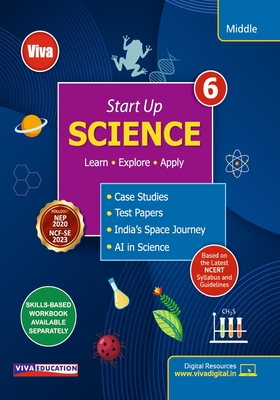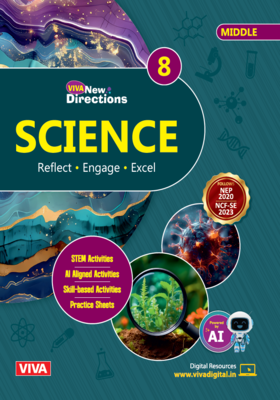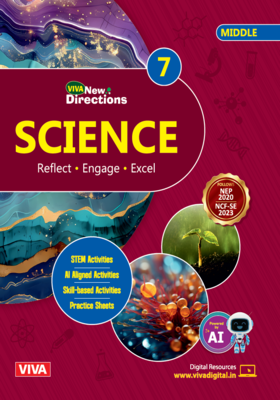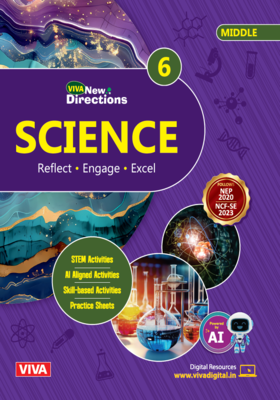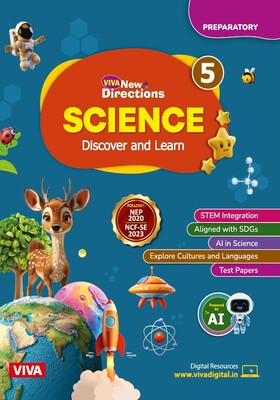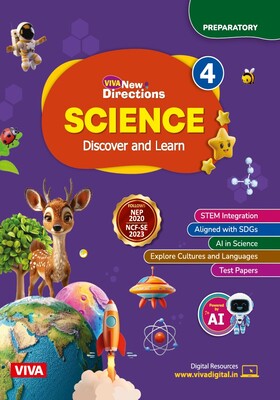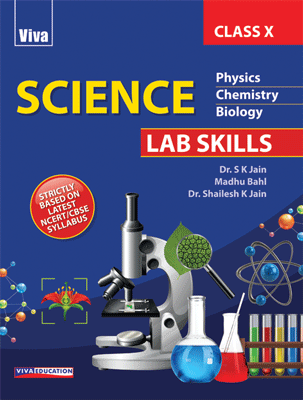
Viva Science Lab Skills - Class X (with notebook)
Viva Science Lab Skills - Class X (with notebook)
₹575.00
Go to cartISBN: 9789388386296
Bind: Hardbound
Year: 2020
Pages: 232
Size: 8.5 x 11 Inch
Publisher: Viva Education
Exclusive Distributors: Viva Books
Sales Territory: Worldwide
Description:
Strictly Based on Latest NCERT/ CBSE Syllabus
Salient features of the book
- The book has been prepared in accordance with the latest CBSE syllabus and pattern.
- Each chapter is supported by a large number of Viva Voce Questions (with Answers) and Multiple Choice Questions (with Answers).
- Each section (Physics, Chemistry and Biology) is closed with a set of Projects. The projects are innovative and aimed to stimulate students for scientific research.
- An introduction on How to prepare a Project Report, helps a student to present his/her work in a more impressive, systematic and scientific way.
Target Audience:
CBSE Students of Class 10.
Contents:
PHYSICS
Chapter 1: Electricity and Electric Current • Studying the dependence of potential difference (V) across a resistor on the current (I) passing through it and determine its resistance. Also plotting a graph between V and I • Determination of the equivalent resistance of two resistors when connected in series and parallel
Chapter 2: Reflection and Refraction of Light • Determination of the focal length of (a) Concave mirror (b) Convex lens by obtaining the image of a distant object • Tracing the path of a ray of light passing through a rectangular glass slab for different angles of incidence. Measure the angle of incidence, angle of refraction, angle of emergence and interpret the result. • Finding the image distance for varying object distances in case of a convex lens and drawing corresponding ray diagrams to show the nature of image formed • Tracing the path of the rays of light through a glass prism
Projects • Project P1: Calorific Value of a Fuel • Project P2: Electric Motor • Project P3: Focal Length of a Convex Lens
CHEMISTRY
Chapter 1: Chemical Reactions • Performing and observing the following reactions and classifying them into: (a) Combination reaction (b) Decomposition reaction (c) Displacement reaction (d) Double displacement reaction (i) Action of water on quick lime (ii) Action of heat on ferrous sulphate crystals (iii) Iron nails kept in copper sulphate solution (iv) Reaction between sodium sulphate and barium chloride solutions
Chapter 2: Acids, Bases and Salts • A. Studying the properties of acids and bases (HCl & NaOH) by their reaction with: (a) Litmus solution (blue/red) (b) Zinc metal (c) Solid sodium carbonate • B. Finding the pH of the following samples by using pH paper or universal indicator: (a) Dilute hydrochloric acid [Dil. HCl(aq)] • (b) Dilute NaOH solution [Dil. NaOH(aq)] • (c) Dilute ethanoic acid solution [Dil. CH3COOH(aq)] • (d) Lemon juice • (e) Water (distilled) • (f) Dilute hydrogencarbonate solution [Dil. NaHCO3(aq)]
Chapter 3: Reactivity of Metals • Observing the action of Zn, Fe, Cu and Al metals on the following salt solutions: (a) ZnSO4(aq) (b) FeSO4(aq) (c) CuSO4(aq) (d) Al2(SO4)3(aq). Arranging Zn, Fe, Cu and Al (metals) in the decreasing order of reactivity based on the above result
Chapter 4: Carbon and Its Compounds • Study of the following properties of acetic acid (ethanoic acid): (i) odour (ii) solubility in water • (iii) effect on litmus (iv) reaction with sodium hydrogencarbonate • Study of the comparative cleaning capacity of a sample of soap in soft and hard water
Projects • Project P1: Identification of an Acid and a Base • Project P2: Exothermic and Endothermic Reactions • Project P3: Esterification • Project P4: Soaps and Detergents • Project P5: Periodic Table
BIOLOGY
Chapter 1: Life Processes • Preparing a temporary mount of a leaf peel to show stomata • Experimentally show that carbon dioxide is given out during respiration
Chapter 2: Reproduction in Living Organisms • Studying (a) binary fission in Amoeba and (b) budding in yeast with the help of prepared slides • Identification of the different parts of an embryo of a dicot seed (Pea, gram or red kidney bean)
Projects • Project P1: Breathing out Carbon Dioxide • Project P2: Transpiration • Project P3: Phototropism • Project P4: Vestigial Organs
About the Authors:
Dr. S K Jain did his postgraduation from IIT Delhi and PhD from University of Delhi. He specializes in Physical Chemistry and takes special interest in Electrochemistry and Energy Conversion. He has published over fifty research papers in journals of international repute. Dr. Jain has visited several countries on research assignments as Research Associate and also as Visiting Scientist. He has written many textbooks for school and college students.
Madhu Bahl did her postgraduation (M.Sc. Honours) in Botany from J & K University, Srinagar; B.Ed. from Punjab University and stood first in the University. She is the Founder Principal of KB DAV Senior Secondary Public School at Chandigarh. She has 35 years of experience in teaching and school administration. Having worked with hundreds of students, she has intense first-hand knowledge of how they learn and the difficulties they encounter. Madhu Bahl is the recipient of the National Teachers Award by the President of India, CBSE National Teachers Award and State Award for her contribution in the field of education.
Dr. Shailesh K Jain did his postgraduation from IIT Kanpur and PhD from the United Kingdom. He specializes in the field of Heterogeneous Catalysis and has special interest in the field of Analytical Chemistry related to the metallurgical operations. He has published several research papers and co-authored many textbooks for school and college students. He is involved actively in the popularization of Science at School undergraduate levels.
